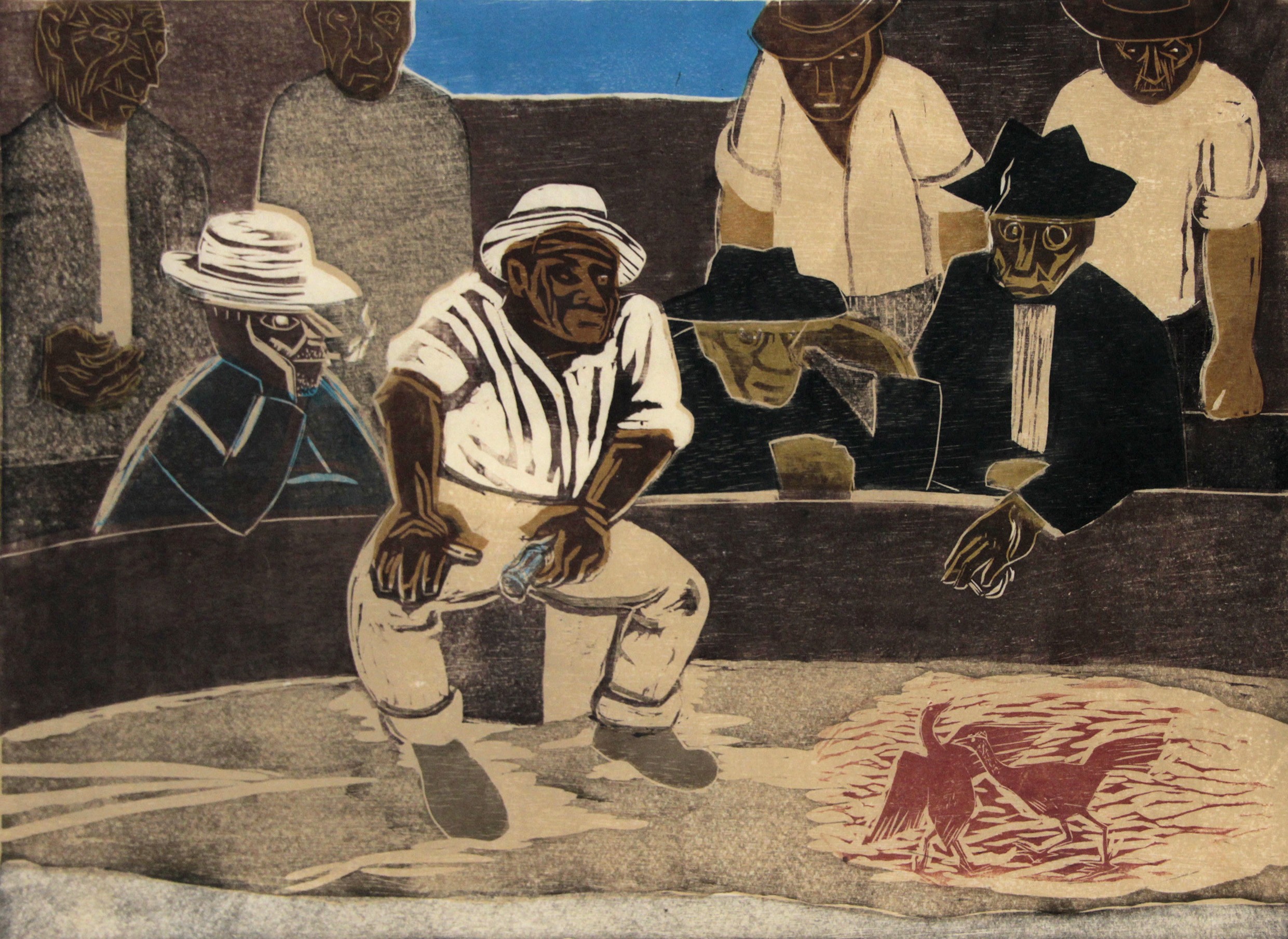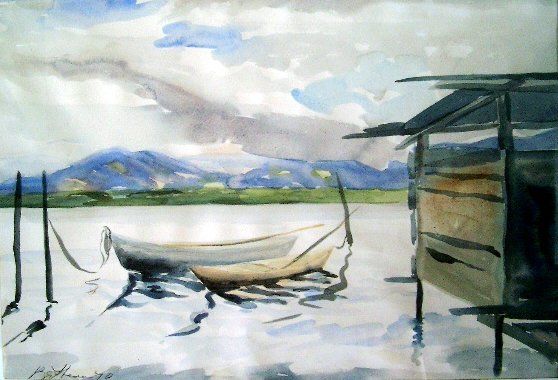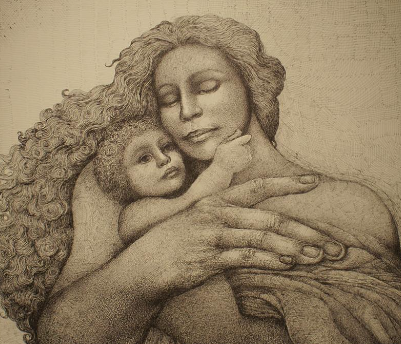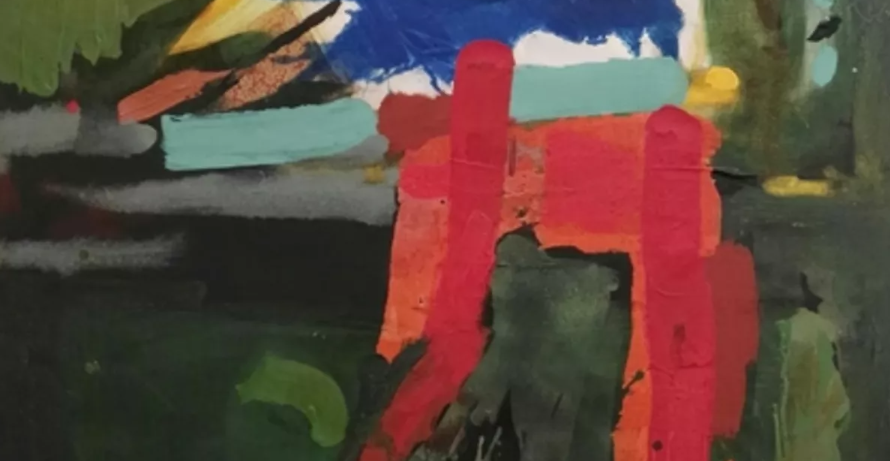Masters of Color and Tradition in Costa Rican Art
- 1. Teodorico Quiros (1897-1977)
- 2. Francisco Amighetti (1907-1998)
- 3. Margaret (Margarita) Bertheau (1913-1975)
- 4. Fernando Carballo (1925-2012)
- 5. Lola Fernández (1926)
- 6. Juan Manuel Sánchez (1930-2016)
- 7. Leonel González (1962)
- 8. Rafa Fernández (1935-2018)
- 9. Fabio Herrera (1954)
- 10. Emilia Prieto (1902-1986)
- Tradition, Color, and People: What Inspires Artists from Costa Rica?
Costa Rica, a vibrant country known for its breathtaking natural landscapes and rich biodiversity, boasts an equally vibrant art scene that reflects its diverse cultural heritage and environmental consciousness. The Costa Rican art world is a dynamic blend of indigenous traditions, colonial influences, and contemporary expressions, making it a unique and fascinating area of study.
What makes the Costa Rican art world particularly interesting? Its ability to encapsulate the country's multifaceted identity! The fusion of indigenous motifs with modern techniques and themes creates a distinctive feature in the works of Costa Rican artists, showcasing a deep respect for heritage while embracing global artistic movements. Many artists incorporate environmental themes and social commentary into their work, reflecting the country's commitment to conservation and social justice. This is evident in the vibrant and often surreal interpretations of natural landscapes, the exploration of indigenous cultures, and the critique of social inequalities.
Its artists serve as ambassadors of their culture, inviting the world to explore the depths of Costa Rica's environmental and social landscape through their creative expressions! In this post, we will look at 10 notable painters who have made significant contributions to Costa Rica's creative history.
1. Teodorico Quiros (1897-1977)

Teodorico Quirós, Costa Rican, 1945
Teodorico Quiros is regarded as one of the founding founders of Costa Rican art. His work primarily represents the Costumbrismo movement, which focused on depicting and celebrating the everyday life, customs, and traditions of a specific place, in this case, Costa Rica. Quiros is best known for his landscapes that meticulously capture the serene beauty and lushness of the Costa Rican countryside, imbuing his paintings with a sense of national identity and pride. Quiros' style is characterized by its detailed realism and vibrant portrayal of natural light, which he skillfully used to highlight the tranquil beauty of rural Costa Rica. His paintings often feature traditional Costa Rican architecture, verdant landscapes, and scenes of daily life, serving as a visual homage to the country's heritage and natural splendor. Among his notable works, "El Trapiche" stands out as a quintessential example of his ability to capture the essence of Costa Rican rural life. The painting depicts a traditional sugarcane mill, a common sight in the Costa Rican countryside, showcasing Quiros' attention to detail and his deep connection to his homeland's landscape. Another significant piece, "Vista de Santo Domingo," exemplifies his mastery in portraying the tranquil and picturesque qualities of Costa Rican towns. His dedication to portraying the beauty of Costa Rica's landscapes and its people's way of life helped to cultivate a sense of national pride and cultural appreciation that continues to influence Costa Rican artists today.
2. Francisco Amighetti (1907-1998)

Francisco Amighetti "Hombre con Gallos"
Francisco Amighett was one of Costa Rica's most prolific and versatile artists, known for his significant contributions to painting, printmaking, and woodcutting. His artistic journey spanned over seven decades, during which he explored and expressed a variety of themes ranging from social injustice to the mystical aspects of human existence. Amighetti's work is often associated with the Social Realism movement, reflecting his keen observation of society and his commitment to depicting the realities of life in Costa Rica. Amighetti's style is distinguished by a distinct blend of realism and surrealism, as well as a heavy use of symbolism and an often brilliant, expressive use of color. Among his notable works, "La Muerte de Zacarias" stands out as a powerful example of his ability to weave social commentary into his art. This piece reflects on the themes of death and social inequality, showcasing Amighetti's skillful use of composition and symbolism. Another significant work, "Hombre con Gallos" (Man with Roosters), exemplifies his interest in rural life and the human condition, portrayed through a combination of realism and allegorical elements. An interesting aspect of Amighetti's life was his deep involvement in the cultural and artistic development of Costa Rica. He was not only a founding member of the Grupo 8, a collective that sought to modernize Costa Rican art, but also actively participated in the establishment of important cultural institutions.
3. Margaret (Margarita) Bertheau (1913-1975)

Margaret Bertheau "Vista De San José"
Prominent Costa Rican artist Margaret (Margarita) Bertheau had a profound impact on the nation's cultural environment as a painter and educator. She was deeply involved in art education, playing a crucial role in nurturing the next generation of Costa Rican artists. Her style often blended elements of realism and impressionism, showcasing her ability to capture light and atmosphere, which brought her subjects to life with a palpable sense of warmth and immediacy. One of her famous works, "Vista de San José," exemplifies Bertheau's skill in landscape painting. This piece offers a picturesque view of Costa Rica's capital, highlighting her adept use of color and composition to depict the urban and natural beauty of her homeland. Bertheau's art represents a movement towards capturing the authentic Costa Rican experience, focusing on the natural beauty and daily life of its people. Her work is a testament to the early stages of developing a distinctly Costa Rican visual narrative within the broader context of Latin American art.
4. Fernando Carballo (1925-2012)

Fernando Carballo - "Maternidad"
Fernando Carballo was a well-known Costa Rican artist whose creations had a big influence on his nation's artistic culture. Known for his deep engagement with social themes and human conditions, Carballo's art spans across painting, drawing, and sculpture, reflecting a profound commitment to exploring the nuances of human existence and the social realities of his time. His work delves into themes of inequality, human rights, and the spiritual aspects of existence, offering a poignant critique of societal issues through a deeply personal lens. His work "Maternidad" (Maternity) showcases his ability to capture the profound bond between mother and child, imbued with a sense of universal humanity and compassion. This piece exemplifies Carballo's skill in portraying intimate human relationships while conveying broader themes of love, vulnerability, and strength. His dedication to the arts was also evident in his advocacy for artists' rights and his efforts to promote art as a means of social reflection and change.
5. Lola Fernández (1926)

Lola Fernández "Mujer Con Frutas"
Well-known for her work as a painter, educator, and promoter of the arts, Lola Fernández is an important personality in Costa Rican art. Her commitment to education and her efforts in founding art programs and workshops have been instrumental in cultivating numerous generations of artists in Costa Rica. Her work is characterized by its exploration of color, form, and texture, reflecting both the physical beauty of Costa Rica's landscapes and the rich tapestry of its cultural heritage. Fernández's art often delves into themes of femininity, nature, and social justice, offering a nuanced perspective on the interconnectedness of human and environmental well-being. "Mujer con Frutas" (Woman with Fruits), exemplifies her focus on the female figure, depicted in harmony with nature, highlighting her interest in exploring the roles and representations of women in society and art. Fernández's works, which span from the figurative to the abstract, are characterized by their flowing, organic shapes and vivid color scheme. As an advocate for the arts, Lola Fernández has played a crucial role in promoting cultural initiatives and supporting the arts community in Costa Rica.
6. Juan Manuel Sánchez (1930-2016)

Juan Manuel Sánchez
Juan Manuel Sánchez is a celebrated Costa Rican artist, whose work has significantly contributed to the visual arts scene in the country. Known for his versatility, Sánchez has explored various mediums, including painting, engraving, and drawing, showcasing a profound understanding of both traditional and contemporary artistic expressions. Sánchez's artistic approach is marked by precise realism and at times, a surrealistic touch, merging aspects of Costa Rican folklore, historical narratives, and scenes from daily life. This fusion creates compelling narratives that invite viewers to delve deeper into the stories and identities that shape Costa Rican society. In one of his distinguished pieces, "La Carreta" (The Ox Cart), Sánchez masterfully depicts a key emblem of Costa Rican rural life, employing vivid colors and intricate detail to celebrate the nation's farming roots and the importance of community and tradition. Another noteworthy work, "Mercado Central" (Central Market), presents a lively depiction of daily existence, accentuating the rich diversity and dynamism of Costa Rican culture. Throughout his career, Juan Manuel Sánchez has remained dedicated to enriching the cultural fabric of Costa Rica, not only through his art but also through his active participation in the artistic community as a mentor and advocate for the arts.
7. Leonel González (1962)

Leonel González "Cahuita"
Leonel Gonzalez Chavarría is a modern artist whose work is featured in the collections of at least two prestigious institutions: the Museum of Latin American Art (MOLAA) in Long Beach, California, and the Art Museum of the Americas (AMA) in Washington, D.C. Bright, rich colors, contrast, and dynamic compositions are characteristic elements of his art. His well-known piece, "Cahuita," features a woman seated on a green chair. The figure's black silhouette stands out against the multicolored background, highlighting the artwork's use of vivid, contrasting colors. Leonel González's paintings are a vivid celebration of the Afro-Caribbean culture of Costa Rica, often depicting people in their daily routines, such as fishing, as well as the local natural landscape that surrounds them.
8. Rafa Fernández (1935-2018)

Rafa Fernández "Ladronas De Lunas"
Rafa Fernández is a notable painter renowned for his unique style that blends elements of magic realism and surrealism. His work often features mystical landscapes, whimsical figures, and a rich palette that evokes a sense of wonder and fantasy. Rafa Fernandez is a three-time recipient of the National Award Aquileo J. Echeverría in Visual Arts for the years 1968, 1972, and 1975. Additionally, he garnered the Santiago Award in Spain in 1985 and was honored with the prestigious Magón Award, the highest cultural accolade in Costa Rica, in 2002. His mastery of technique is flawless, and the themes that resonate most profoundly with his character are those centered around the female form. Rafa Fernández uses subdued, sometimes dark hues to convey a sense of mystery and depth in his paintings, which are mostly nameless but nearly always feature women in mystical settings. Some of his best-known pieces are "Mujer En Azul" and "Ladronas de Lunas" which depict a woman in a rich dark dress with a hat casting a shadow over her face. Fernández's art is deeply rooted in Central American culture and heritage, showcasing the region's history, its people's stories, and the natural beauty of the land.
9. Fabio Herrera (1954)

Fabio Herrera
Fabio Herrera is known for his abstract and minimalist approach to art. Herrera's art is characterized by its use of vibrant colors, geometric shapes, and the integration of natural elements, reflecting a deep connection to the natural landscapes of Costa Rica. One notable work by Herrera is "El Vuelo," which captures the essence of movement and freedom through abstract forms and a harmonious blend of colors. Another significant piece is "Naturaleza Estática," where he plays with the concept of static nature using a minimalist approach, blending organic forms with a subtle color palette to evoke a serene and contemplative mood. Herrera's style is often associated with contemporary abstract movements, where the emphasis is on the emotional and conceptual over the representational. Through his art, Herrera contributes to the broader movement of Latin American abstraction, adding a unique voice that emphasizes the beauty and complexity of the natural world.
10. Emilia Prieto (1902-1986)

Emilia Prieto "La Perfecta Casada"
Emilia Prieto Tugores was a pioneering graphic artist, educator, and folklorist, recognized for her significant contributions to the cultural and artistic heritage of Costa Rica. She was deeply involved in the study and preservation of Costa Rican folk traditions, music, dance, and art, which greatly influenced her own work. Through her paintings, she aimed to capture the essence of Costa Rican identity, traditions and the richness of its cultural diversity. In addition to her artistic endeavors, Emilia Prieto made substantial contributions to the field of education and cultural preservation. She was instrumental in establishing folk art schools and workshops to promote traditional Costa Rican crafts, and her efforts in documenting and promoting Costa Rican folklore have left an enduring legacy. Prieto authored several satirical essays adorned with graphic illustrations, occasionally under a pseudonym, challenging the conservative mindsets of her era. Her drawing, "La Perfecta Casada" (The Perfect Housewife), serves as a caricature that critiques the conventional image of a woman. While specific titles of her works might not be widely known internationally, her impact on Costa Rican culture and her role in elevating the status of folk art and traditions within the country are well recognized.
Tradition, Color, and People: What Inspires Artists from Costa Rica?
It's evident that a common thread among Costa Rican artists is their passionate endeavor to capture the vibrant essence, rich traditions, and the diverse populace of their homeland. They aim not only to reflect the tangible reality but also to explore and unveil the enchanting mystical aspects of their country!
Should you wish to expand your horizons and explore the works of artists from across the globe, our TrendGallery website offers a treasure trove of inspiration. Here, you will discover a world of art that has no borders, encouraging you to travel via the creative expressions of international talents!
No Comments Yet...